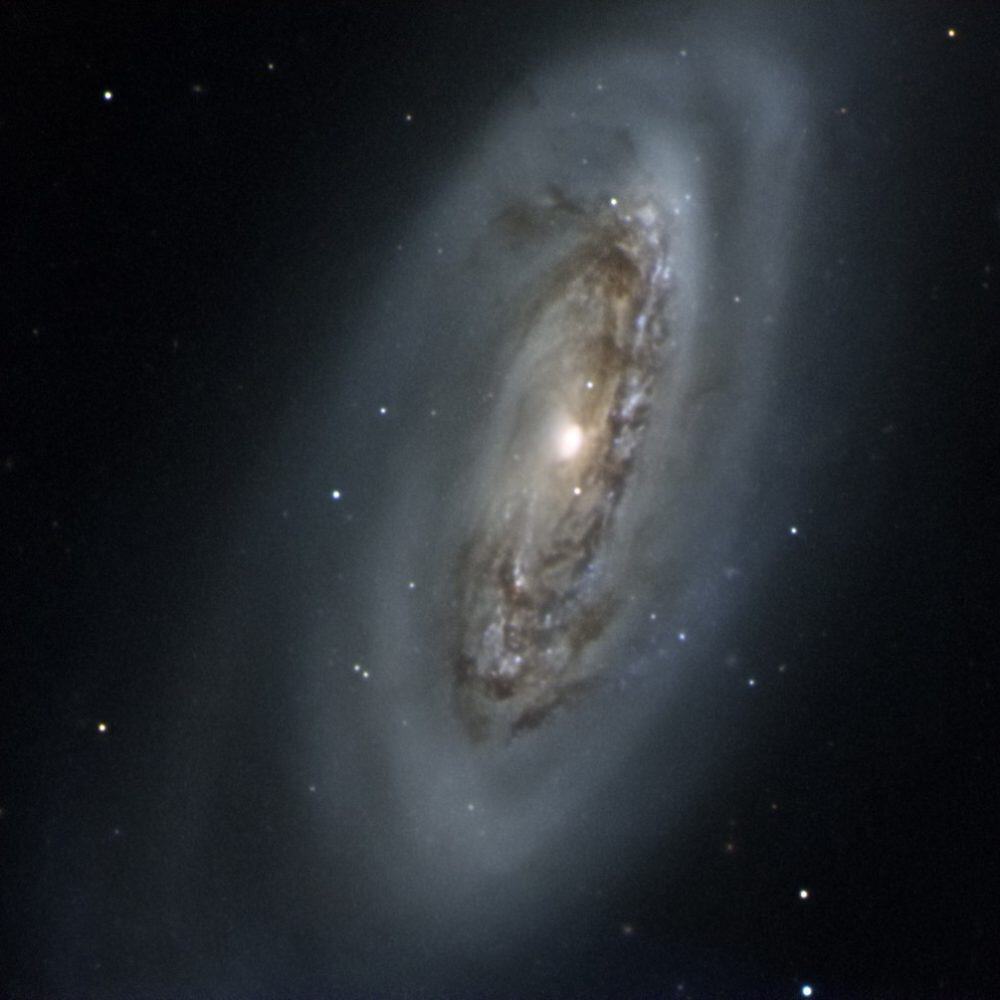The Cosmos with M90
Messier 90 (also known as M90 and NGC 4569) is an intermediate spiral galaxy exhibiting a weak inner ring structure about 60 million light-yearsaway in the constellation Virgo. It was discovered by Charles Messier in 1781.
Messier 90 is a member of the Virgo Cluster, being one of its largest and brightest spiral galaxies, with an absolute magnitude of around -22 (brighter than the Andromeda Galaxy). The galaxy is located approximately 1°.5 away from the subgroup centered on Messier 87. As a consequence of the galaxy’s interaction with the intracluster medium in the Virgo Cluster, the galaxy has lost much of its interstellar medium. As a result of this process, which is referred to as ram-pressure stripping, the galaxy’s interstellar medium and star formation regions appear severely truncated compared to similar galaxies outside the Virgo Cluster and there are even H II regions outside the galactic plane, as well as long (up to 80 kpcs, 260,000 light-years) tails of ionized gas that has been stripped of M90. The spectrum of Messier 90 is blueshifted, which indicates that it is moving towards the Earth. In contrast, the spectra of most other galaxies are redshifted. The blueshift was originally used to argue that Messier 90 was actually an object in the foreground of the Virgo Cluster. However, since the phenomenon was limited mostly to galaxies in the same part of the sky as the Virgo Cluster, it appeared that this inference based on the blueshift was incorrect. Instead, the blueshift is thought to be evidence for the large range in velocities of objects within the Virgo Cluster itself.
